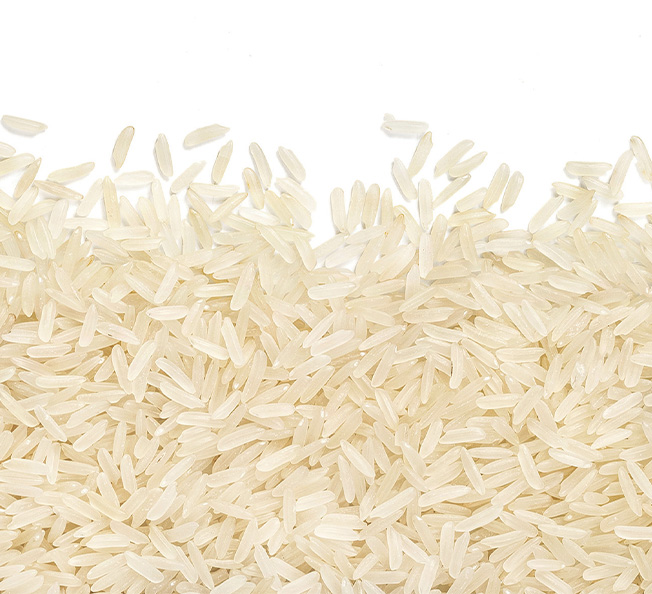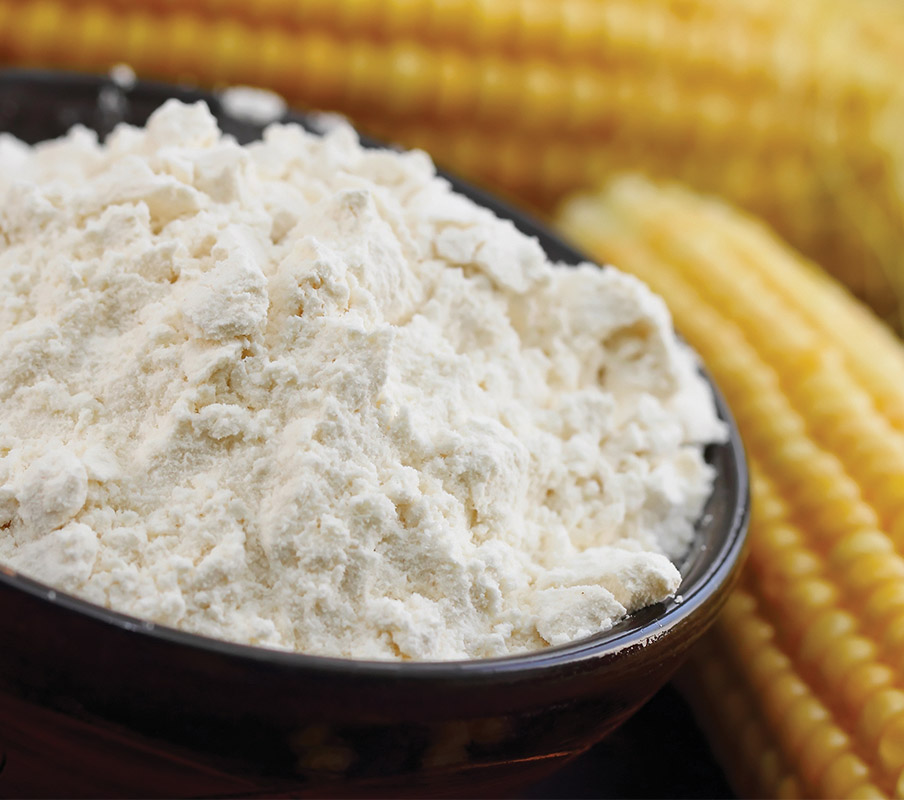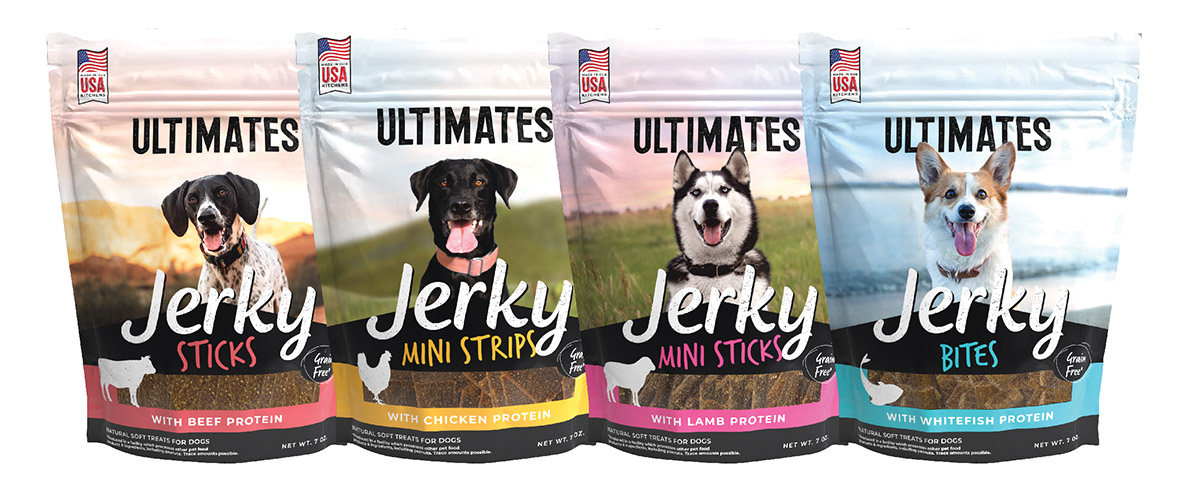This article was published in the December 2022 issue of Pet Food Processing. Read it and other articles from this issue in our December digital edition.
The pet food and treat industry continues to expand through the influences of urbanization, humanization and premiumization. Packaged Facts recently shared 52% of US households own pets. This translates into 68 million homes that consider pets as part of the family.
The ongoing humanization of pets finds human elements intersecting with trends within the pet food and treat industry. Near the top of that list is the concept that what’s good for humans nutritionally will also be good for pets, leading to consumers to question the use of carbohydrates in pet food and treats.
 Rice is a highly digestible carbohydrate that is often used as an ingredient in pet food and treats. | Source: ©ROMARIO IEN – STOCK.ADOBE.COM
Rice is a highly digestible carbohydrate that is often used as an ingredient in pet food and treats. | Source: ©ROMARIO IEN – STOCK.ADOBE.COM Arguments against carbohydrates include weight gain and lack of digestibility in dogs and cats. Both are misconceptions the industry continues to combat. Anti-carb arguments referencing ancestral diets have also been refuted through research showing dogs possess genes for digesting starches, which is different from wolves.
“Consumers may consider carbohydrate ingredients as cheap fillers with little nutritional value,” said Dan Su, DVM, DACVIM (Nutrition), BSM Partners, Columbia, Md. “They see carbohydrates as a common source of allergies and a cause of diseases such as diabetes and cancer; therefore, carbs shouldn’t be part of a dog or cat’s food because it’s not their ‘ancestral’ diet.”
Busting myths
These myths can undermine consumers seeing the potential benefits of carbohydrate inclusion. Cereal grains are often the preferred carbohydrates in pet food and treats because of their low cost and high nutritive value, but the source of carbohydrates used depends on the target consumer of the food and treats, according to Melissa Brookshire, DVM, North River Enterprises, Evergreen, Colo.
“Some brands avoid ingredients such as corn while others embrace it,” Brookshire continued. “Rice is a highly digestible carbohydrate and may be used in a food or treat that is claiming ‘easily digestible’ or something similar. Legumes and other vegetables are also used in grain-free formulations.”
“Some brands avoid ingredients such as corn while others embrace it,” said Melissa Brookshire, DVM, North River Enterprises.
The important macronutrient that provides calories and energy to a pet formulation can also serve different roles in forms of pet food such as raw, freeze-dried and fresh-cooked diets. Fruits and vegetables may be used to meet the nutritional needs of animals as well as consumer demand. In order to make the beneficial elements accessible, it is important to cook the fruits, vegetables, corn, soy, legumes and oats with starches to make them digestible. The cooking process allows the carbohydrates to be easily digested within the body.
Crossover concerns
While consumer trends certainly influence the industry, the approval process around new ingredients, such as some ancient grains, is necessary. Perhaps in part for its novelty, consumers continue to be drawn to ancient grains such as quinoa, millet and sorghum for their perceived superior nutrition. Brookshire cautioned the importance of understanding how these ingredients fit into the overall nutrition of a diet because there is not much scientific data or historical use of some of these ingredients in pet food. Other elements contributing to growth include air-dried and freeze-dried products with new extrusion technology, allowing lower and low-carbohydrate diets that maintain the essential amino acids and fatty acids.
But maintaining the presence of a variety of nutritional inputs may be key. Mitch Felderhoff, president of sales and marketing, Muenster Milling, Muenster, Texas, recommended avoiding going heavy with a single source of carbohydrates. He also cautioned against using ingredients with gluten because of the crossover handling of products by those who are feeding the pet.
“I think there are consumer misconceptions when it comes to consumers staying away from corn, soy, wheat and the traditional cereal grains,” Felderhoff continued. “The public tends to overreact to some of these based on anecdotal evidence or unfounded claims. When you dig into the actual nutrition of the ingredients and diets in question, some of the issues are actually due to overconcentration of a singular ingredient as opposed to healthy levels.”
 Corn starch is a common carbohydrate that can be used as a binder in canned pet food products. | Source: ©LISA870 – STOCK.ADOBE.COM
Corn starch is a common carbohydrate that can be used as a binder in canned pet food products. | Source: ©LISA870 – STOCK.ADOBE.COM Allergies can occur from the body’s response to the protein component of an ingredient. This would make it possible for the pet to be allergic to other carbohydrate sources in the product, but it would be an extremely rare situation, according to Brookshire.
The inclusion of legumes and pulses contain anti-nutritional factors and oligosaccharides that can negatively affect digestibility and fecal quality. This does not mean that these ingredients cannot be safely used in formulations when used at a safe inclusion rate, according to Su. Instances depend on the fiber level and oligosaccharides of that specific ingredient to avoid causing a histamine response in the animal if it is sensitive to that carbohydrate.
“The recent FDA reports of dilated cardiomyopathy (DCM) correlated grain-free diets and legumes to the development of disease,” Su said. “However, it is impossible to draw any definitive conclusions at this time to link specific ingredients to DCM. Since there are potential unknown ingredient interactions and variation in ingredient nutritional variability, as well as potential genetic predispositions, it is best practice to analyze the finished product instead of relying on formulation data and to perform feeding trials and digestibility studies to ensure safety of the product.”
Balancing act
While excessive carbs could become problematic over the long term, total avoidance poses another issue — the elimination of many important vitamins, minerals and fiber. Too much animal protein can lead to high-fat, calorie-dense diets with high-fat diets being difficult for some dogs to digest. Additionally, calorie-dense diets can contribute to overweight animals.
“Because cats and dogs evolved as Carnivora, many consumers think they require extremely high protein and fat concentrations in the diet and avoid carbohydrates,” said Kelly Swanson, professor at the College of Agricultural, Consumer and Environmental Sciences, Department of Animal Sciences and Division of Nutritional Sciences, at the University of Illinois at Urbana-Champaign. “However, carbohydrates may not only provide benefits from a processing perspective, but they also serve as an economical and easily digestible energy source (starch), provide benefits for laxation, weight management and blood glucose/lipid control (fibers) and may serve as prebiotics important for gut health.”
Beneficial fiber promotes regular bowel movements that support healthy digestion, regulates pH within the colon and contributes to the growth of beneficial gut bacteria. Fiber is indigestible in the gut of pets but is used within the gut microbiome to help control energy content and support gastrointestinal health. The evolution from wild to domesticated animals has created tolerance for carbs and domestication of dogs allows them to do well on a diet rich in starch.
“People often don’t make the connection that carbs are a great source of fiber,” said Carolyn Kennedy, CK Nutrition.
“People often don’t make the connection that carbs are a great source of fiber,” said Carolyn Kennedy, director, CK Nutrition, Exeter, NH. “If you cut out carbs, you still need to include fiber, and carbs are fiber.”
Without some form of fiber, product characteristics may be negatively impacted. Fiber assists with the extrusion process, helping ingredients move through the extruder and assisting with form and structure of the kibble. Many canned foods use carbohydrates as gelling agents.
It’s also important to determine the correct level of fiber. For example, indoor pets might need more fiber than more active outdoor pets. The inclusion of too little fiber or too much fiber in a formulation can create problems for animals and manufacturers alike. Fiber-containing carbohydrates must also go through the gelatinization process to ensure the pet can digest the food.
Functionally, starch is important for extruded products. Starch promotes binding, homogenization, provides structure to dough, and is a source of energy that aids in processing. The inclusion of starch in a formulation provides shape, hardness, texture and density to extruded kibble, and improves the palatability of food and its intake. This makes it a popular inclusion for treats targeting dental health.
Ingredients such as corn starch can be used as a binder in canned loaf products or to create structured pieces in chunks and gravy recipes. Cargill, Minneapolis, offers a range of label friendly texturizing solutions that simplify reading labels for consumers. For example, labels state corn starch, potato starch or tapioca starch, but bring functional properties similar to the modified starches they replace.
 Legumes and vegetables are often used as sources of carbohydrates in grain-free formulations. | Source: Midwestern Pet Foods, Inc.
Legumes and vegetables are often used as sources of carbohydrates in grain-free formulations. | Source: Midwestern Pet Foods, Inc. To protect the product once it is manufactured, TC Transcontinental, Chicago, offers packaging that includes barrier, strength, performance, shelf stability and graphic appeal while supporting a responsible end-of-life solution.
“If the carbohydrates are oxygen- or moisture-sensitive, we can build most levels of barrier into the pet food package,” said Rebecca Casey, senior vice president, marketing and sales, TC Transcontinental. “A move to sustainable packaging doesn’t result in a reduction of shelf life.”
Total package
Carbohydrates also help manufacturers achieve optimal macronutrient balance in a range of formulations and provide consistency within the manufacturing process. Formulations should consider how ingredient properties can impact digestibility and fecal quality, how the carbohydrates will be metabolized, along with the formulation(s) for unique health conditions and the appropriate processing method for the product. Inclusion must also provide the right nutritional requirements for an animal’s particular life stage.
“Ultimately, finding the right carbohydrate is highly dependent on the application and the corresponding requirements for texture and structure,” concluded Conor Sullivan, senior technical services specialist, Cargill. “Carbohydrates provide energy, which pets need for fur coat development, muscle development, brain functionality and similar health considerations.”
Read more about product development, ingredients and formulation.





